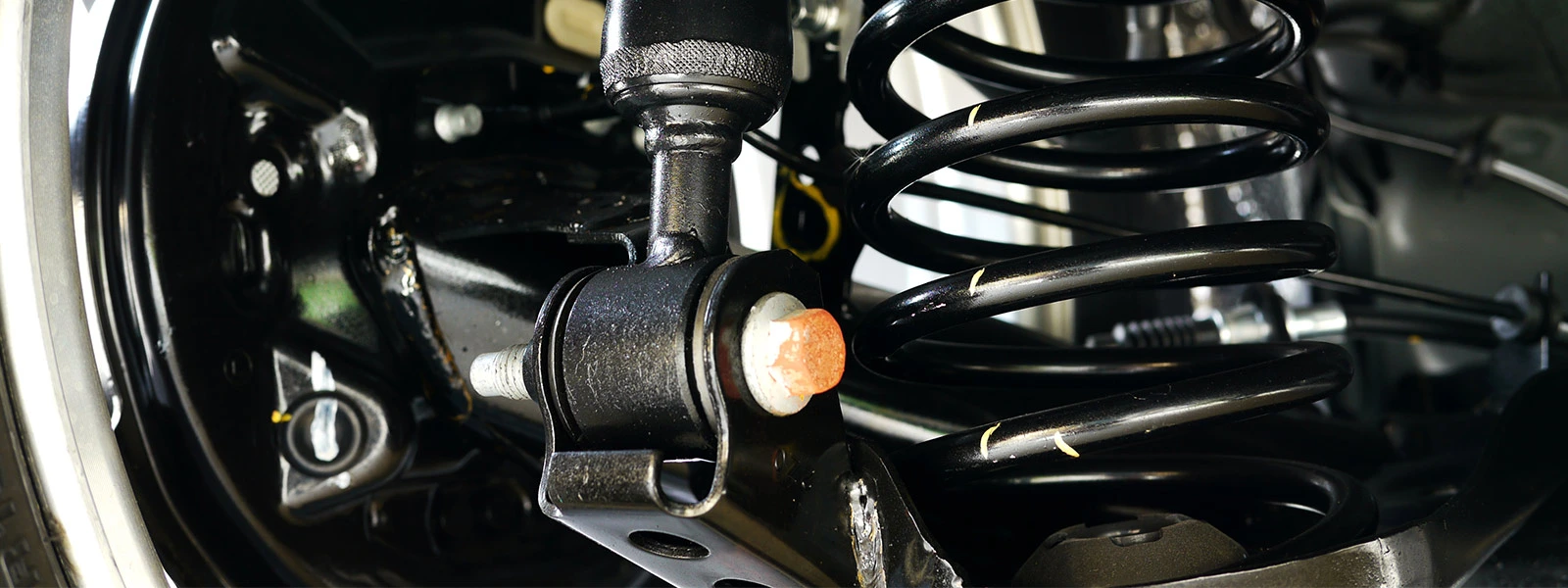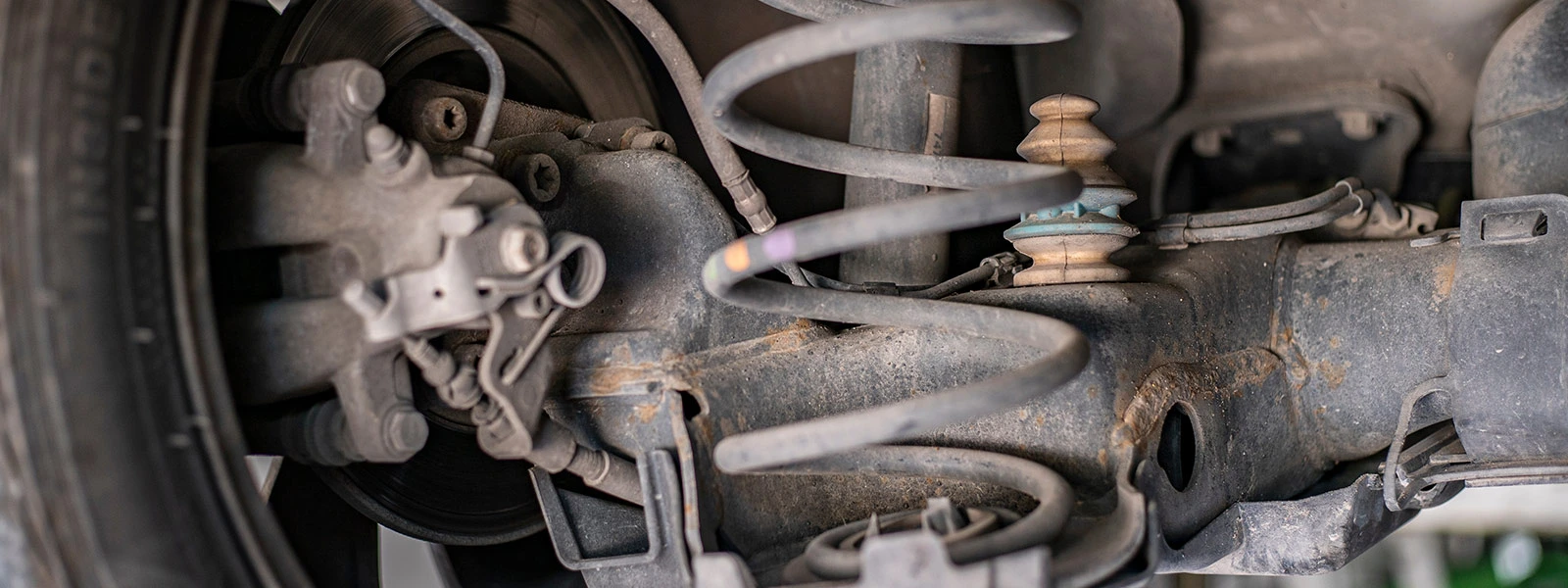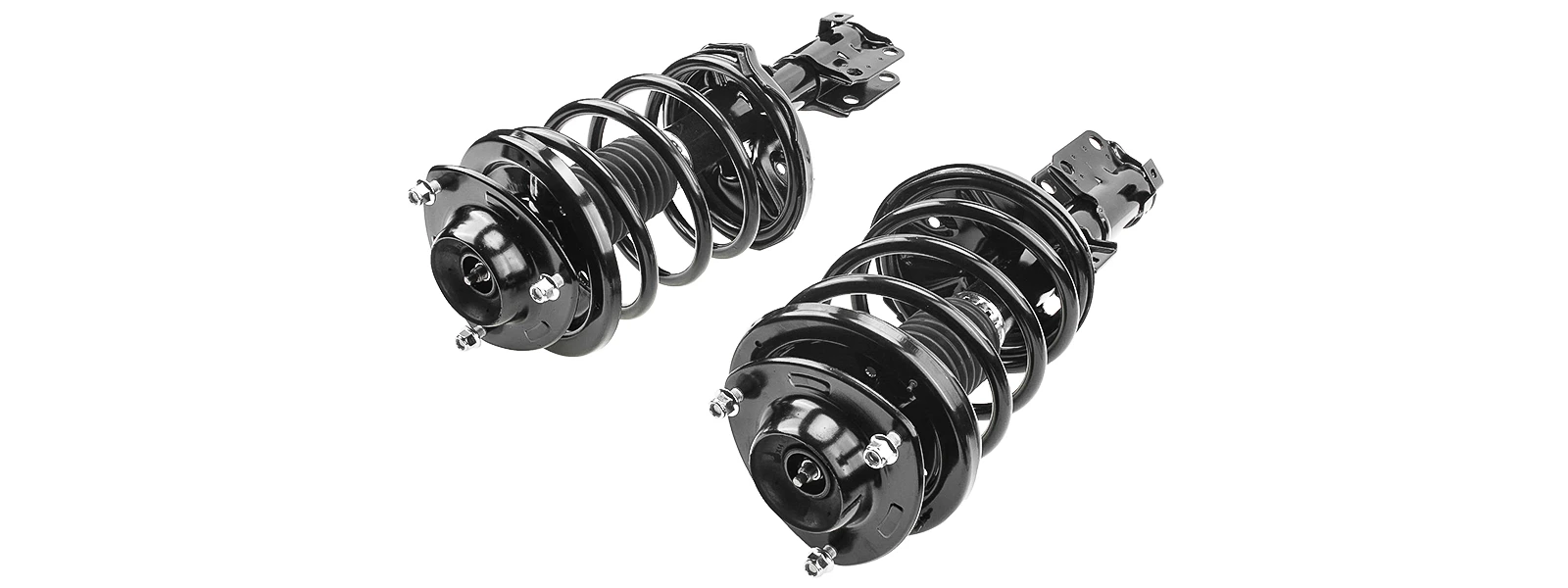How to Replace Shock Absorbers?

If your vehicle's ride quality has deteriorated or you notice signs of wear on the shock absorbers, it may be time to replace them.
Car shock absorbers, also known as dampers, are an essential part of a vehicle's suspension system. They are designed to absorb the impact of bumps and vibrations that occur while driving, providing a smooth and comfortable ride for passengers.
The main purpose of shock absorbers is to control the movement of the springs, which are responsible for supporting the weight of the vehicle and absorbing the energy from bumps and uneven road surfaces. Without shock absorbers, the springs would continue to bounce up and down, causing the car to bounce and making it difficult to control. Shock absorbers play a crucial role in ensuring a safe and comfortable driving experience, and it's important to have them regularly inspected and replaced as needed to maintain optimal performance.

How long do shock absorbers last?
The lifespan of a shock absorber can vary depending on a number of factors, such as the quality of the shock absorber, driving conditions, and the maintenance of the vehicle. Typically, a shock absorber will last between 50,000 and 100,000 miles. However, some high-quality shock absorbers can last even longer, while cheaper or poorly-maintained shock absorbers may need to be replaced sooner. It’s also worth mentioning that shock absorbers don't just wear out on their own - they can also be damaged by things like potholes, speed bumps, and rough roads. It's generally recommended to have your shock absorbers checked every 50,000 miles, or sooner if you notice any signs of wear or damage.
How to Tell If Shock Absorbers Need Replacing
Over time, however, shock absorbers wear out and lose their effectiveness, which can compromise your vehicle's performance and safety. Knowing when to replace your shock absorbers is crucial for maintaining your car's optimal performance and ensuring your safety on the road. If you detect these signs, you may need a new shock absorber:
- Poor handling: If your vehicle feels unstable and wanders on the road or pulls to one side, it could be a sign that your shock absorbers are worn out.
- Rough ride: If your car feels bumpy or rough, or you feel every bump and dip in the road, it could be a sign that your shock absorbers are not working properly.
- Longer braking distance: If your car takes longer to come to a stop, especially on bumpy roads, it could be a sign that your shock absorbers are worn out.
- Uneven tire wear: If your tires are wearing unevenly, especially on the inside or outside edges, it could be a sign that your shock absorbers are not keeping the tires in proper contact with the road.
- Oil leakage: If you notice oil leaking from your shock absorbers, it's a clear sign that they need to be replaced.
- Visible damage: If you notice that your shock absorbers are dented, damaged, or rusty, it's a sign that they may need to be replaced.

If you're experiencing any of these symptoms, it's recommended that you have your shock absorbers inspected by a qualified mechanic. They can determine if your shock absorbers need to be replaced or if there is another issue causing the symptoms.
Steps for Changing Shock Absorbers
Replacing the shock absorbers of your car is crucial for a safer and more comfortable driving experience. Nonetheless, it is important to note that the process may vary depending on the type of vehicle. For instance, if your vehicle has a shock absorber or struts within a coil spring, you may benefit from referring to a specific guide. Now let's get to work changing those shocks.
Determine the type of shock absorber your vehicle has. It could be a twin-tube, monotube, or coilover shock absorber. And before you get started, gather all the tools or materials you may need during the replacement. You will need new shock absorbers, a jack and jack stands, wrenches and sockets, lubricant, a torque wrench, a pry bar, safety glasses, and gloves.
- Park your vehicle on a flat surface and use blocks to prevent the wheels that will remain on the ground from moving. Then, use a floor jack to lift the vehicle and secure it with jack stands. If possible, leave the wheels on the vehicle for extra safety. It is crucial to ensure that you position the jack stands in the appropriate areas on the frame to maintain stability.
- Locate the lower shock retaining nut and loosen it. Do not remove the bolt yet. If the nut is rusted or difficult to remove, apply penetrating oil or use a nut splitter to help loosen it.
- Find the mounting hardware at the top of the shock absorber. It may be retained by two bolts that require a long socket extension to access.
- Remove the old one and replace it with a new high-quality shock absorber that fits. Tighten the bolts and nuts to the manufacturer's specifications using a torque wrench.
- Repeat the process for the remaining shock absorbers.
- Lower the car to the ground and test drive it to ensure that everything is working correctly.
Keep in mind that always refer to your vehicle's owner's manual for specific instructions and safety precautions. If you are unsure about replacing a shock absorber yourself, it is recommended to have a professional mechanic do it for you.
Mistakes to avoid during replacement
- Not replacing the shock absorber in pairs.
- Installing the shock absorber upside down or backward.
- Over-tightening or under-tightening the bolts.
- Not cleaning the mounting points before installation
- Not testing the new shock absorber before driving
Replacing shock absorbers is an essential part of vehicle maintenance that helps ensure a smooth, safe, and comfortable ride. By understanding the signs of shock absorber wear and taking the time to properly research the process, use the correct tools and equipment, and follow the manufacturer's instructions, you can successfully replace your shock absorbers and avoid common mistakes that can lead to safety hazards and costly repairs. By investing in the proper care and maintenance of your vehicle's suspension system, you can enjoy a more reliable, efficient, and enjoyable driving experience for years to come.

